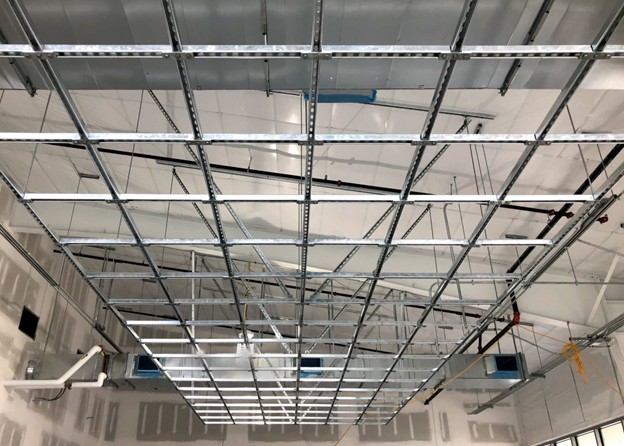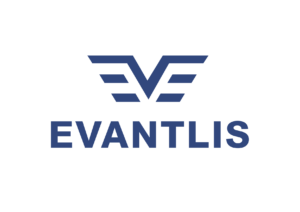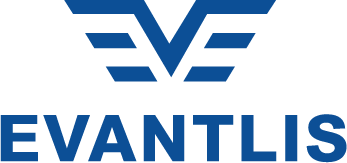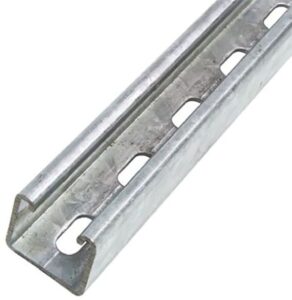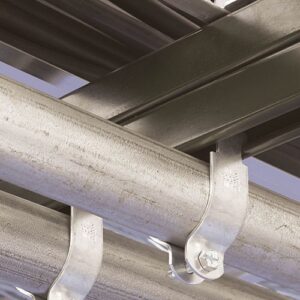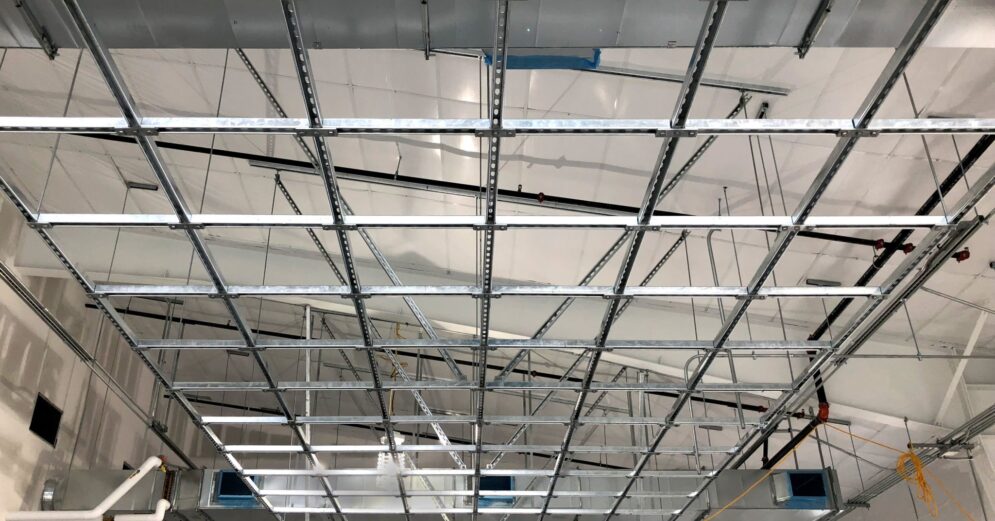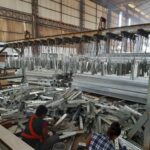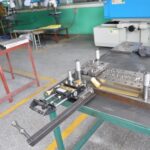Proper Installation Techniques: Best Practices for Installing Strut channels to Ensure Longevity
When it comes to ensuring the longevity and durability of your projects, proper installation techniques for strut channels are paramount. Whether you’re using stainless steel unistrut, aluminum strut, or galvanized strut channel, following best practices can make all the difference. Now, it is time to explore the key procedures and recommendations to make the most of your metal strut installations.
Preparing for Installation
Before starting, it’s crucial to understand the specific requirements of your project. Different types of strut channels, such as aluminum strut or stainless steel unistrut, are suited for different environments. For instance, stainless steel unistrut is ideal for corrosive environments, while galvanized strut channel works well in general outdoor applications. Knowing the right type to use is the first step in ensuring a successful installation.
The right tools and materials have to be used for the installation of strut channels to be successful. Before you start your project, ensure that you collect the right tools, which include a good hacksaw or power saw that will enable you to cut through the metal of the strut channels that you have chosen. Also, make sure you have a variety of screws and other types of industrial fasteners like stainless steel fasteners, which are perfect for use in areas that are exposed to the elements, or areas that are prone to corrosion. Finally, do not leave out the use of protective gear including gloves and safety goggles to avoid getting injured during the installation.
Here are the top 10 dos and don’ts to keep in mind:
Dos:
- Do Understand Load Requirements: Calculate and understand the load requirements for your strut channels before installation to ensure they can support the intended weight.
- Do Use the Right Tools: Use appropriate tools such as a hacksaw or power saw for cutting strut channels accurately to size, ensuring a precise fit.
- Do Follow Manufacturer Specifications: Adhere to the manufacturer’s specifications and guidelines for installation, including recommended industrial hardware and torque values.
- Do Securely Fasten Channels: Use proper fastening techniques with suitable nuts bolts and washers to securely attach strut channels to structural elements.
- Do Ensure Proper Alignment: Maintain straight alignment and level installation of strut channels to prevent stress concentration and ensure load distribution.
- Do Regular Inspections: Conduct regular inspections of installed strut channels for signs of wear, corrosion, or loose fasteners, and address any issues promptly.
- Do Consider Environmental Factors: Choose strut channels appropriate for the environment, such as stainless steel for corrosive atmospheres or galvanized steel for outdoor applications.
- Do Plan for Expansion and Contraction: Allow for thermal expansion and contraction by leaving adequate space between strut channel sections and structural attachments.
- Do Use Safety Gear: Wear appropriate safety gear, including gloves and eye protection, when handling tools and materials during installation to prevent injuries.
- Do Document Installation: Keep records of the installation process, including measurements, fastener types used, and any adjustments made, for future reference and maintenance.
Don’ts:
- Don’t Overload Strut channels: Avoid exceeding the maximum load capacity specified by strut manufacturers to prevent structural failure.
- Don’t Improperly Cut Channels: Avoid using improper cutting tools or techniques that could damage the strut channels, compromising their strength and integrity.
- Don’t Use Incorrect Fasteners: Avoid using incompatible or low-quality fasteners that may corrode or fail prematurely, compromising the installation’s stability. For heavy-duty applications, consider using anchor bolts that comply with ASTM F1554.
- Don’t Ignore Structural Support: Ensure proper structural support for strut channels, including adequate attachment points and load-bearing surfaces.
- Don’t Skip Alignment Checks: Neglecting to check and maintain proper alignment during installation can lead to uneven stress distribution and potential failure.
- Don’t Overtighten Fasteners: Avoid over-tightening bolts, as this can damage strut channels or strip threads, compromising the integrity of the installation.
- Don’t Neglect Regular Maintenance: Regularly inspect and maintain strut channels to prevent deterioration or failure due to environmental factors or wear over time.
- Don’t Install in Inappropriate Locations: Avoid installing strut channels in areas prone to excessive moisture, chemical exposure, or other conditions that could accelerate corrosion.
- Don’t Rush the Installation: Take the time to plan and execute the installation carefully, following best practices and ensuring each step is completed correctly.
- Don’t Ignore Safety Precautions: Always prioritize safety during installation, using proper safety equipment and following safety guidelines to prevent accidents or injuries.
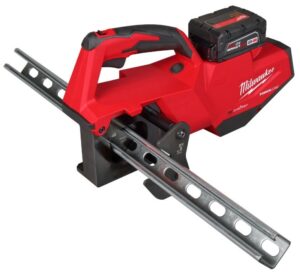
Inspect Your Materials
It is recommended to check your strut channels for any signs of wear and tear before you install them. Howev
er, even the best strut channel produced by the best strut channel manufacturers can be affected by mishandling during transportation. Bends, cracks, or any signs of corrosion are some of the things to look out for. This quick check can help you avoid problems in the future.
Ensuring Longevity
Regular Maintenance
It is therefore important to carry out maintenance on your strut channels from time to time. Check your installations occasionally to ensure that they are not worn out or damaged in some way. Check all the bolts and screws and make sure they are properly tightened and replace any rusty part. For galvanized strut channels, ensure that there is no breakdown of the zinc coating and if there is, then it should be repaired.
Environmental Considerations
One must take into account the conditions in which the strut channels will be used. For outdoor or corrosive environment, it is advised to use stainless steel unistrut or galvanized strut channels. Aluminum strut can be used where the environment is indoor or dry. Choosing the right material for the right environment is one way of increasing the life span of the installation.
Protective Coatings
Painting or applying other protective layers can also be of great help in increasing the durability of the strut channels. For instance, a galvanized strut channel already has zinc coating to protect it from rust. However, in very demanding conditions, extra layers of protection like epoxy or powder coat may be used. Always follow the application guidelines to ensure effective coverage.
Real-World Example
In a large scale solar energy project, aluminum strut channels were used to support photovoltaic panels on the roof of a building. This project needed a light structure but strong enough to bear the loads and different weather conditions to support the solar array. By ensuring that the installation of the aluminum strut channels meets all the recommended practices such as taking the right measurements and fastening the channels with stainless steel bolts, the solar panels have been effectively supported for over five years without any structural problems.
The selection of aluminum strut channels was critical to the design because of their corrosion resistance and load-bearing capability of multiple solar panels. Inspections have been conducted periodically to make sure that the installation is secure and during maintenance, slight corrections are made to the panel to ensure they are properly aligned and supported. This case study is a good example of how it is necessary to choose the right materials and follow the guidelines on their installation to provide long-term performance in renewable energy systems.
Routine Maintenance Tips: Keeping Strut channels in Top Condition
It is important to perform regular maintenance on your strut channels so that they will last longer and function as they should. No matter if you are using stainless steel unistrut, aluminum strut or galvanized strut channel, proper maintenance can help avoid failures and increase the durability of the installations.
Inspect Regularly
In fact, it has been established that the inspection of structures is the key to proper maintenance. It is recommended to schedule strut channels check-ups every few months or more often if they are exposed to severe conditions. Check for rust, signs of wear, or any other signs of damage. It is also important to look at regions where the strut channels join other materials as these areas are normally under stress and prone to corrosion.
Clean Thoroughly
Strut channels can also get dirty, dusty or greasy and this can lead to corrosion and therefore weaken the channels. Clean it gently with a soft brush and a gentle cleaning solution to get rid of any accumulation. For stainless steel unistrut and aluminum strut, do not use any chemicals that may cause the surface or protective coating to be damaged. Cleaning is not only about making the strut channels to look good but also to make sure that they are working as they should.
Check Fasteners
Fasteners are considered as the backbone of any strut channel system. Nuts bolts and washers should be inspected periodically to ensure that they are well tightened. In the long run, vibrations and loads may cause the fasteners to come loose leading to instability. It is recommended to use a torque wrench in order to tighten fasteners to the recommended torque by the manufacturer. Any fasteners that are worn out or rusty should be replaced as soon as possible.
Lubricate Moving Parts
In case your strut channel system has some parts that are movable like adjustable brackets or sliding parts, then lubrication must be done frequently. Ensure that these parts are lubricated well with an appropriate lubricant to reduce wear. If your strut channel system includes moving parts like adjustable brackets or sliding components, regular lubrication is crucial. For example, WD-40 Specialist Water Resistant Silicone Lubricant is great for metal surfaces, providing long-lasting lubrication without attracting dirt. Another excellent option is 3-IN-ONE Professional Garage Door Lubricant, which works well on moving parts and reduces friction. Always choose a lubricant that is compatible with your strut channel materials to avoid any chemical reactions or damage.
Protective Coatings
Applying a protective coating can significantly extend the life of your strut channels, especially if they are exposed to harsh environments. Galvanized strut channels already have a protective zinc coating, but additional treatments like powder coating can provide extra protection.
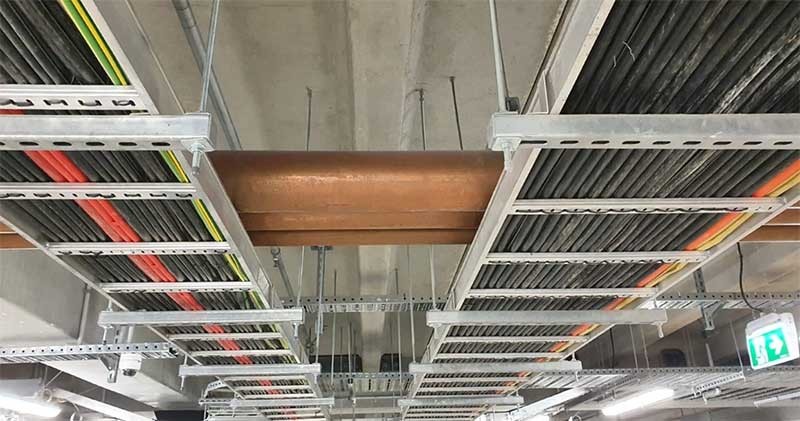
Dos and Don’ts of Strut channel Maintenance
Dos:
- Do Schedule Regular Inspections: Consistent inspections help identify issues early before they become significant problems.
- Do Use Appropriate Cleaning Solutions: Choose mild cleaning agents to avoid damaging the material of your strut channels.
- Do Tighten Fasteners Properly: Use a torque wrench to ensure fasteners are tightened to the correct specifications.
- Do Apply Protective Coatings: Extend the life of your strut channels by applying suitable protective coatings.
- Do Document Maintenance Activities: Keep detailed records of all maintenance activities for future reference and compliance purposes.
Don’ts:
- Don’t Ignore Small Issues: Small signs of wear or corrosion can quickly escalate if not addressed promptly.
- Don’t Use Harsh Chemicals: Avoid using abrasive or harsh chemicals that can damage the finish or material of your strut channels.
- Don’t Over-Tighten Fasteners: Over-tightening can strip threads or damage the structural integrity of the strut channels.
- Don’t Neglect Moving Parts: Failing to lubricate moving parts can lead to increased wear and eventual failure.
- Don’t Skip Protective Coatings: Protective coatings are crucial for preventing corrosion and extending the life of your strut channels.
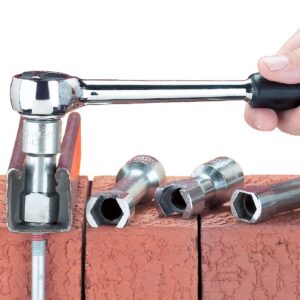
Tools for Effective Maintenance
Having the right tools is essential for effective maintenance. Here are some tools you should have:
- Torque Wrench: Ensures fasteners are tightened to the correct specifications. Sizes typically range from 10-150 ft-lbs.
- Soft Brush: For cleaning dirt and debris without scratching the strut channels.
- Mild Cleaning Solution: Avoids damaging the material while effectively cleaning.
- Lubricant: Suitable for metal surfaces, such as WD-40 or a silicone-based lubricant.
- Protective Coating Spray: For additional protection against corrosion and wear.
Corrosion Prevention Strategies Methods to prevent rust and corrosion on metal strut channels.
It is important to ensure that your strut channels are well maintained so as to ensure the longevity and safety of the installations. The two biggest foes are rust and corrosion, particularly in the harshest of conditions. Here are some practical ways to avoid corrosion on your metal strut channels such as stainless steel unistrut, aluminum strut, and galvanized strut channels.
Choose the Right Material
The first and one of the easiest methods of avoiding corrosion is to ensure that the strut channels are made of the right material. Stainless steel unistrut is ideal for corrosive areas because it does not rust. Aluminum strut is another great choice; it is light in weight and has inherent oxide layer that does not allow rust to form on it. Galvanized strut channels are made of steel which has been coated with a layer of zinc; these types of channels are relatively corrosion resistant and can be used in most outdoor environments.
Apply Protective Coatings
To avoid rusting of the metal strut channels, you should apply protective coatings on them. Painting, powder coating and galvanization are some of the methods used. Galvanization is a process of applying a thin layer of zinc that will act as a sacrificial layer to the base metal. Powder coatings give a long-lasting and good-looking surface to the material on which they are applied. Make sure that coatings conform to the requirements of the industry standards like ASTM A123 for galvanization.
Use Corrosion Inhibitors
Corrosion inhibitors are chemicals that, when applied to metal, form a protective layer. These inhibitors can be especially useful in environments where moisture or salt is prevalent. Products like WD-40 Specialist Long-Term Corrosion Inhibitor can be sprayed directly onto metal surfaces to prevent rust. Make sure to choose inhibitors that are compatible with your strut channel materials.
Ensure Proper Installation
In addition, correct installation procedures can also help in reducing corrosion rates. Ensure that the fasteners used are compatible and do not cause galvanic corrosion, for instance, stainless steel fasteners with stainless steel unistrut. Make sure that all joints and connections are well secured to reduce the level of moisture penetration. Adherence to the manufacturer’s specifications and other best practices such as ASTM A1011 can be useful in this regard.
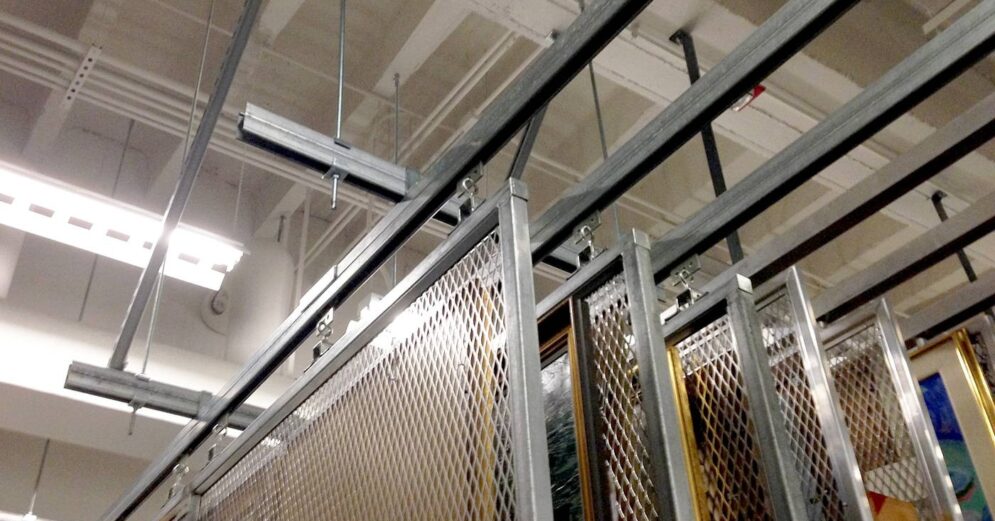
Repair vs. Replacement: When to Repair Your Strut channels and When to Replace Them
Deciding between repairing and replacing your strut channels is never a simple decision. Here, you will learn the factors that you need to look at when determining whether your strut channels require some touch up or a complete overhaul. This knowledge helps in extending the life of the installations and also helps in identifying the right time to repair or replace.
Assessing Damage and Wear
In assessing your strut channels, the first step you should take is inspection. Some of the signs to look for include rust, corrosion, bending, or even cracks on the part. For galvanized strut channels, look for areas where the zinc coating may have worn off. ASTM A123 standards require that the coating of the steel should not be broken to avoid corrosion. If the damage is small, for example, small rust spots or slight bends, then a repair could be enough. However, if the product has a lot of rust, is cracked to the core or is bent beyond a certain degree, then it is best replaced.
Cost-Benefit Analysis
Consider the costs associated with repair versus replacement. While repairing a metal strut might be cheaper initially, frequent repairs can add up. Replacement might seem costly upfront, but it can save money in the long run by reducing maintenance costs and preventing potential safety hazards. Strut manufacturers typically provide guidelines on the lifespan of their products, so refer to those to make an informed decision.
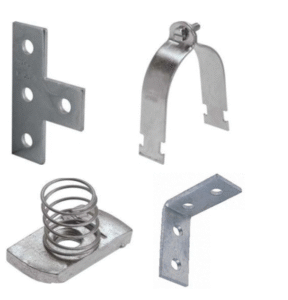
Case Study: Industrial Facility Repair
In an industrial facility, a galvanized strut channel that supports heavy machinery was observed to have some rust on it and it was slightly bent. The problem was not severe and thus the maintenance team decided to carry out a repair. To eliminate rust, they employed a wire brush and applied rust inhibitor and added extra support to the bend. This repair helped to add several more years to the life of the strut, which shows that small problems can be controlled with the right amount of attention.
Coastal Installation Maintenance
In a coastal installation, the aluminum strut channels were used since they have a high resistance to corrosion. The channels were well maintained by having them inspected every six months and applying a corrosion inhibitor. Small cuts and abrasions were cleaned and dressed to avoid the formation of bigger sores.
Real-World Example: Substitution of Chemical Plant
In a chemical plant, metal strut channels were exposed to harsh chemicals leading to rapid corrosion. Despite regular maintenance, the corrosion was too severe, and the decision was made to replace all affected strut channels with stainless steel unistruts.
So, in conclusion to ensure your strut channels last, prioritize regular inspections and timely repairs. Use high-quality materials such as stainless steel or galvanized options, adhering to manufacturer guidelines for installation and maintenance. Employ proper tools for upkeep and apply protective coatings as needed. Safety is paramount; don’t neglect minor issues that could escalate. By following these practices, you’ll maintain structural integrity, reduce long-term costs, and enhance the longevity of your strut channels, ensuring they support your infrastructure reliably for years to come.
